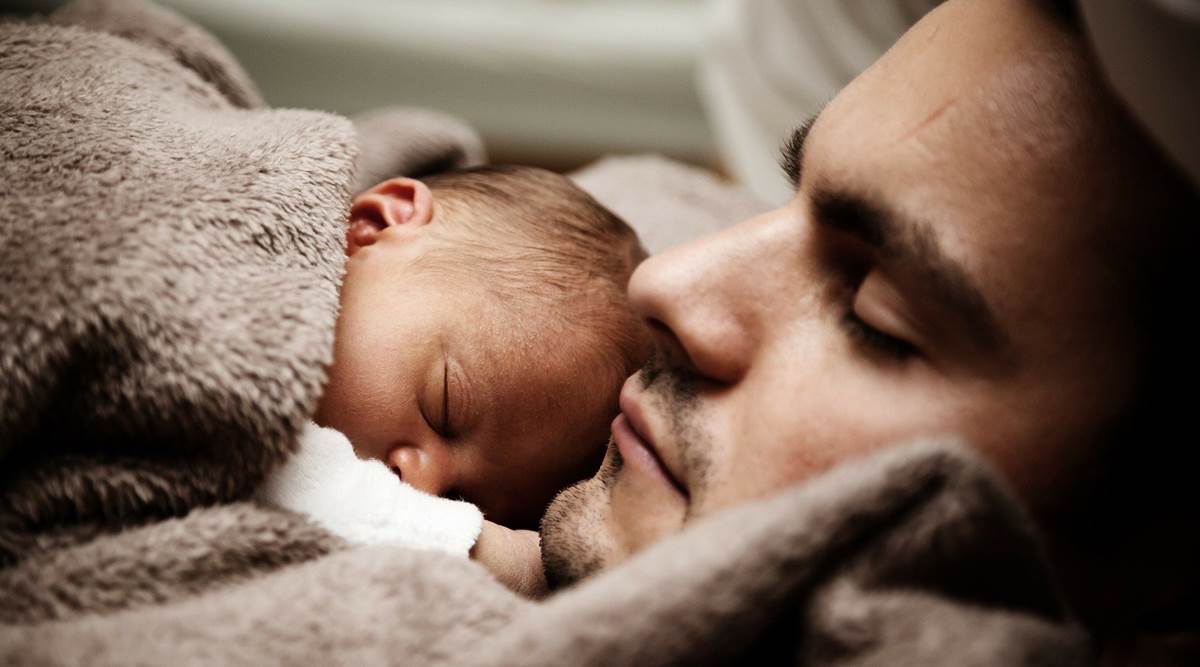Kangaroo Care is mainly started for premature or low birth weight babies. However, full-term or normal weight babies also receive the many benefits of skin-to-skin contact.

By Dr Naveen Bajaj
Kangaroo care is a technique or a method of caring for babies, especially those born with low weight. It includes strapping the infant to the parent’s bare chest providing continuous direct skin-to-skin contact and can be practiced in all newborns. It is a powerful, easy-to-use method to promote the health and well-being of preterm and full-term babies.
Who can provide Kangaroo Care?
The mother is the best person to provide kangaroo care. However, any other person preferably the father or a close family member (including responsible siblings, grandparents, aunts and uncles) can share the role of the mother as a kangaroo care provider. The caregiver should have basic standards of hygiene (e.g. daily bathing, wearing a clean set of clothes, handwashing, maintaining short and clean fingernails).
When to start
Kangaroo care or skin-to-skin contact should ideally begin following the birth and can last all through the whole postpartum period.
ALSO READ |4 ways to make your home safe and natural for your child
What should be the duration of Kangaroo Care?
Initially, Kangaroo care/skin-to-skin contact should be started for a shorter period (around 30-60 minutes). Once the mother is comfortable and confident it can be given for as long as possible especially in low birth weight babies. During this period, the mother can rest or sleep in a semi-reclining position.
The procedure of Kangaroo Care
The baby should be placed in an upright position between the mother’s breasts with the baby’s head on one side for easy breathing and to maintain eye contact with the mother. The baby’s abdomen or tummy should be placed on the mother’s upper abdomen and arms and legs should be folded. A sling/binder or kangaroo bag can also be used for supporting the baby.
Benefits of kangaroo care and skin-to-skin contact
Undoubtedly, Kangaroo Care is mainly started for premature or low birth weight babies. However, full-term or normal weight babies also receive the many benefits of skin-to-skin contact.
ALSO READ |Women likely to test parenting skills on ‘fur babies’ before having a child, survey finds
Some of the key benefits of skin to skin contact are:
-
This is the best way for parents to nurture and bond with their baby. Also, babies are said to have improved interactions with parents.
-
Brain development and emotional intelligence starts to build with skin-to-skin contact. Better eye-to-eye contact, bonding, love and trust also helps in improving social intelligence.
-
Skin-to-skin care also promotes breastfeeding, which is beneficial for both the mother and baby and is the cornerstone for the baby’s nutrition and development.
-
The maintenance of body temperature is better especially for low birth weight babies and in the winter season.
-
Babies gain weight better, spend more time in deep sleep and are also quieter when awake and less time crying.
Hence, such babies are healthier, more intelligent and better bonded with the family. And this is beneficial not only to the baby but also to the mother, the family, the community, and the whole nation.
ALSO READ |‘Whatever we do in our life, our children should be exposed to it’: Purab Kohli
Fathers and skin-to-skin contact
Just like mothers, fathers can also give skin-to-skin contact. This is beneficial for both the baby and the father. Some of the key benefits for fathers are that they will be empowered to care for the baby and not feel helpless. This leads to better bonding and the father can be happy about being an active part of the central caring team. It will also help fathers to understand the baby’s cues for hunger and stress. While the father practices kangaroo care, the mother can rest and be energetic for her next round of care.
Therefore, with skin-to-skin contact, babies stabilise and grow physically as well as mentally better. They feel safe and reassured and hence can use all of the energy to develop well. The WHO and Healthcare professionals, hence, recommend practicing kangaroo care for all babies.
(The writer is Neonatologist, Chairperson Indian Academy of Pediatrics (IAP) Neonatology Chapter)
Source: Read Full Article